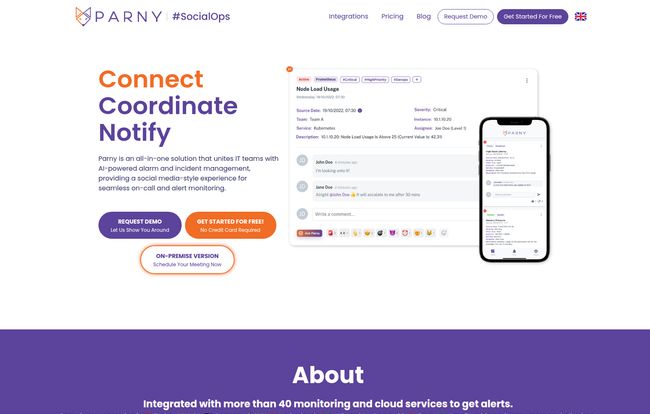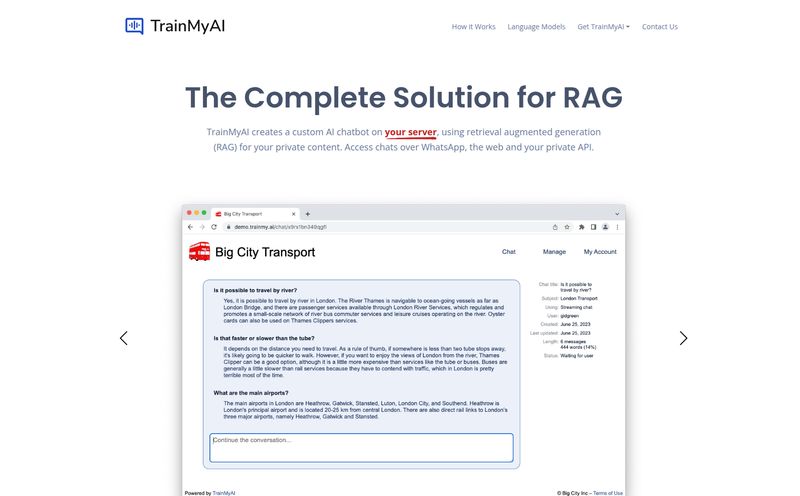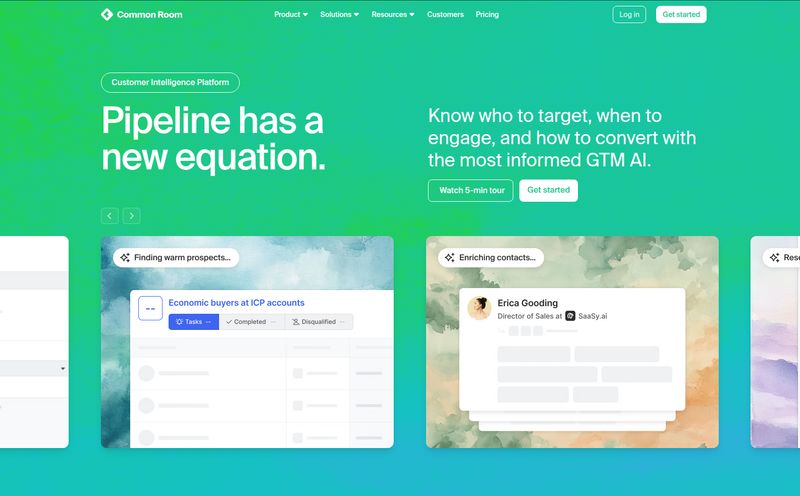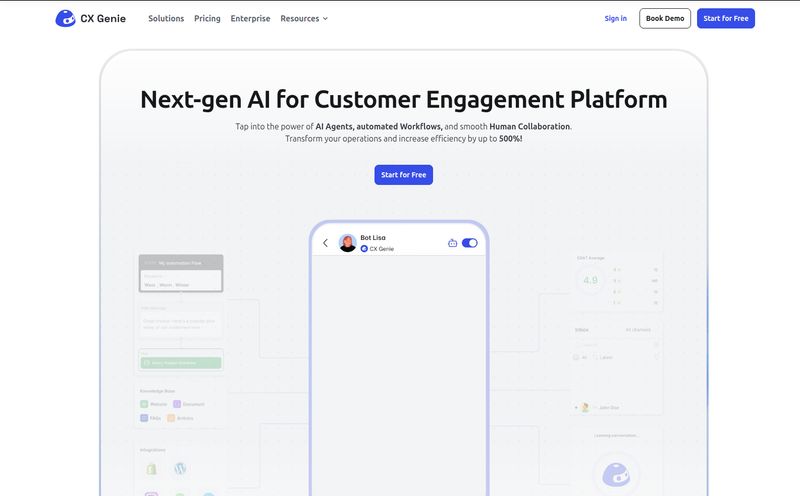We’ve all been there. That soul-shattering alert at 3:17 AM. The one that rips you from a perfectly good dream into a cold-sweat reality where a critical service is down. What follows is usually a chaotic scramble across Slack, email, and a half-dozen browser tabs to figure out what’s on fire, who’s on call, and why the runbook from 2019 is completely useless.
For years, the world of on-call and incident management has been... well, let's just say it's been functional but rarely delightful. Tools get the job done, but they often feel like they were designed in a vacuum, separate from how we actually communicate and solve problems. But every so often, a new player comes along that makes you sit up and take notice. Today, that player is Parny.
I’ve seen a lot of DevOps tools come and go. Some promise to revolutionize everything and end up being just another notification forwarder. So when I first heard about Parny and its whole #SocialOps philosophy, I was skeptical. Social media for IT incidents? Sounds a bit like a marketing gimmick, right? But after spending some time with it, I’m starting to think they might actually be onto something. Something big.
So, What Exactly is Parny?
At its core, Parny is an all-in-one platform for on-call management and alert monitoring. It hooks into your existing monitoring services—over 40 of them, from Prometheus to New Relic to your custom webhooks—and centralizes your alerts. Standard stuff, so far. But the magic isn’t just in what it does, it's in how it does it.
Parny’s mission is to unite your teams not just with alerts, but with each other. It’s built around the idea that resolving incidents is a collaborative effort. It’s less of a cold, robotic fire alarm and more like a shared, interactive workspace where the incident is the main topic of conversation. It's a subtle shift, but one with massive implications for Mean Time to Resolution (MTTR).
The #SocialOps Philosophy: A Gimmick or a Game-Changer?
This is the part that got my attention. Instead of a sterile list of alerts, Parny presents incidents on an interactive timeline that looks and feels remarkably like a social media feed. You can comment on alerts, @mention teammates, use emojis to react, and have threaded conversations right there, attached to the event itself.

Visit Parny
My initial reaction? "Oh great, now I can 'like' a production outage." But I was wrong. Think about the usual workflow. An alert fires. A notification goes to Slack. A discussion starts in one channel, then maybe moves to a huddle or a Zoom call. Someone creates a Jira ticket. Information gets scattered. Context is lost. By the time you write the post-mortem, you’re practically an archeologist, digging through logs and chat histories to piece together what happened.
Parny’s #SocialOps approach keeps everything in one place. The alert, the data, the human conversation, the escalation path—it’s all part of a single, chronological story. This isn't just a UI gimmick; it’s a fundamental improvement to operational workflow. It reduces context switching and creates an automatic, self-documenting record of the incident. It’s a pretty brilliant way to tackle a problem that has plagued operations teams for decades.
Let's Talk AI: Your New DevOps Co-Pilot
If #SocialOps is the heart of Parny, then its AI is the brain. We're seeing AI integrated into everything these days, and frankly, a lot of it is just smoke and mirrors. But Parny’s implementation is surprisingly practical.
It’s called, simply, Ask Parny AI. When an alert comes in, you’re not just left to your own devices. Parny’s AI can provide detailed recommendations for how to troubleshoot the issue. And here's the clever part: it tailors its advice based on specific personas. You can ask for recommendations from the perspective of a:
- Senior Developer: Focused on application code and system architecture.
- DevOps Engineer: Concerned with CI/CD pipelines, infrastructure, and deployment.
- Database Administrator: Zeroed in on query performance, replication, and data integrity.
This is smart. A "Node CPU High" alert means different things to different people. The AI gives each specialist a relevant starting point, cutting down on that initial "what do I even check first?" paralysis. It turns raw alerts into actionable intelligence, which can be a lifesaver when the pressure is on.
Beyond Alerts: Visualizing Chaos with Parny InfraMap
For those who manage complex systems, understanding dependencies is half the battle. A problem in one obscure microservice can cascade and take down an entire user-facing feature. Parny’s InfraMap add-on is designed to solve this very problem.
It’s a real-time visualization of your IT infrastructure—your servers, containers, applications, and all the connections between them. It looks like a classic service map, but it's dynamic. You can see the flow of requests and pinpoint where failures are happening. This is incredibly powerful for not only reactive troubleshooting but also for proactively identifying potential bottlenecks before they become full-blown incidents. This kind of capability is often locked away in expensive, enterprise-grade APM suites, so seeing it available here is a huge plus.
Parny Pricing: Breaking Down the Costs
Alright, let's get to the question on every manager's mind: what’s this going to cost me? Parny's pricing model is a mix of per-user plans and optional add-ons, which offers some nice flexibility.
First, the main plans. The most shocking thing here is the Freemium tier. It’s not a trial; it's a legitimate free plan that includes unlimited members, unlimited integrations, analytics, DORA metrics, and even the Parny AI. The catch? Limited SMS/Call notifications. For small teams or those who can rely on push notifications and email, this is an absolutely incredible starting point. Honestly, it’s one of the most generous free tiers I’ve seen in this space.
Next up is the Basic plan at $11 per member/month. It seems to offer a similar feature set to the free plan, likely with a higher cap on those precious SMS and call credits. For teams that need more reliable, in-your-face alerting, this is the first logical step. The Premium plan, at $27 per member/month, is where you get unlimited SMS/Call notifications, making it the go-to for larger organizations or those with zero tolerance for missed alerts. Finally, there’s a custom Enterprise plan for those who need tailor-made solutions or the on-premise version.
The Parny Add-Ons
This is where you can customize your setup. The core plans are great, but the add-ons provide specialized power-ups.
Parny Pulse: This is their real-time site monitoring service. It starts at $16/month for 50 monitors and goes up from there. A solid option if you want to keep your monitoring and alerting under one roof.
Parny AI: Wait, wasn’t AI included in the main plans? Yes, but this $80/month add-on seems to be the full, unrestricted version. My guess is the core plans offer AI-powered recommendations, while this add-on provides more advanced root cause analysis and deeper insights. For teams drowning in complex alerts, this could be well worth the investment.
Parny InfraMap: The powerful infrastructure visualization tool. Pricing for this is on a "Contact Us" basis, suggesting it's aimed at larger, more complex environments.
So, How Does Parny Stack Up?
The incident management space is dominated by giants like PagerDuty and Opsgenie. So, can a newcomer like Parny compete? In my opinion, yes. It isn't just another clone; it brings a fresh perspective. Its main strengths are clear: the #SocialOps UI is genuinely innovative, the integrated AI is practical, and that freemium plan is a trojan horse that could win over a lot of teams. The on-premise option is also a major differentiator for finance or healthcare sectors.
The potential downside? The modular pricing, while flexible, means you have to do the math. A team needing unlimited alerts, the full AI, and the InfraMap will see the costs add up. And as a newer platform, it might not have every single niche integration that the incumbents have built over the last decade. But with over 40 already, they have the important ones covered.
Frequently Asked Questions (FAQ)
- What is #SocialOps?
- #SocialOps is Parny's term for its collaborative, social media-style approach to incident management. It features an interactive timeline where teams can comment, mention users, and use emojis to communicate directly on an alert, keeping all context in one place.
- Is Parny really free for unlimited users?
- Yes, the Freemium plan supports unlimited users and integrations. The main limitation is the number of SMS and voice call notifications you can send per month. For teams that can work with push and email notifications, it's a fully functional free plan.
- How does the Parny AI work?
- Parny AI analyzes incoming alerts and provides troubleshooting recommendations. It's unique because it can tailor these suggestions to different roles, such as a DevOps Engineer or a Senior Developer, providing more relevant and actionable advice.
- Can Parny integrate with my current tools?
- It's highly likely. Parny integrates with over 40 monitoring, cloud, and ITSM services, including popular tools like Jira, Slack, Prometheus, AWS, Datadog, and ServiceNow.
- What is the difference between the main plans and the add-ons?
- The main plans (Freemium, Basic, Premium) are the core of the service, with pricing per user and differences in notification limits. The add-ons (Pulse, AI, InfraMap) provide optional, specialized functionality that you can add to any plan for an additional monthly fee.
- Do they offer an on-premise version?
- Yes, Parny offers an on-premise version for organizations with strict data residency or security requirements. This is typically part of their Enterprise plan.
The Final Verdict on Parny
After digging in, I'm genuinely impressed. Parny isn't just repackaging old ideas. It’s thoughtfully designed around a modern, collaborative workflow. It feels less like a tool you’re forced to use and more like a helpful teammate that streamlines communication when things go wrong.
If your team is feeling the pain of chaotic incident response or is simply tired of the clunky, legacy feel of older tools, Parny is absolutely worth a look. The barrier to entry is non-existent thanks to teh freemium tier, so there’s really no reason not to take it for a spin. It might just be the breath of fresh air your on-call rotation has been desperately waiting for.
Reference and Sources
- Parny Official Website
- Parny Pricing Details
- Accelerate State of DevOps Report (for more on DORA Metrics)



